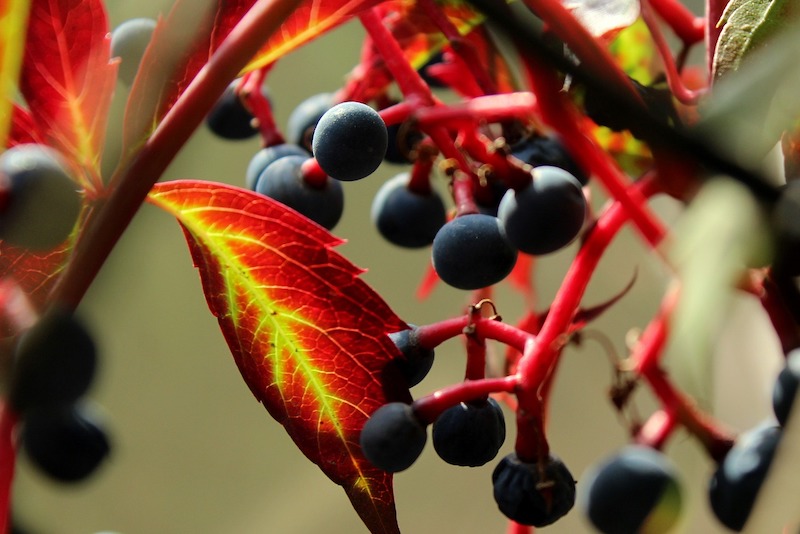Planting in fall can give you a great head start for the next spring season. Check out this article for tips and tricks to best utilize the fall weather and seasonal plant sales.
Planting In Fall
Q: Fall plant sales are starting, and I want to add to my perennial beds. I bought a few plants and began planting them. Some had roots all over the inside of the pot, and some had hardly any roots at all, even though the leafy area of both plants looked the same on top. Should I spread out the roots or leave them in their pot-shaped ball? One plant's dirt ball fell apart, and I could see a smaller, square-shaped ball of roots hidden inside. Should I spread these roots out, too? Could I divide the tops of the plant to get more plants?
A: Fall is a good time to buy many plants because most retail nurseries don't want to try to keep them through the winter months.
These plants were ready to sell back in the spring but didn't sell for some reason. It could have been that the store had too many, or that the remaining plants looked worse than the ones that sold. If you know enough about plants to evaluate their condition, then you should buy as many good ones as you can.
Look for a plant that has a good number of leaves and branches. If it has broken branches or very few leaves, it should be discounted.
If you can lift it out of the pot without damaging it, then slide it up to look at the root system. Most plants should have white roots in all areas, not just the top or on one side. If the roots are brown on one side, it may mean the pot was sitting in the sun and the roots were killed by its heat. If the roots are only on the top half of the pot, it could mean the pot sat in water, the bottom of the soil became waterlogged and the roots died. Also, some plants like ferns have thin root systems that may not look too full but are doing just fine. Ask a knowledgeable salesperson for advice if you are not sure.
Some plants will be root-bound: The roots hit the side of the pot, drop down to the bottom of the pot and then begin circling around and around. They might be sending roots and new shoots out of the pot's bottom holes. As you noticed in the middle of one of your pots, this can happen no matter how big the plant is. As a cutting, many plants are stuck into small pots that are only an inch or two across. They can become root-bound in the small pot if they are not replanted into a larger pot soon enough. When you saw the square area of roots, you saw a ball of root-bound roots that had been stuck into a larger pot without spreading them out.
Roots don't change paths after they have grown. If the roots are not spread out when the plant is moved into a larger pot, planted in a nursery field or planted into your landscape, the roots will stay in the square or circular shape. The roots do expand in diameter as they grow. If a root is wrapped around other roots and it expands, it could girdle them. Roots that wrap around the others or around the trunk strangle each other, and the plant dies. It may take a decade or more for a tree or shrub to die this way, and unless the roots are dug up, no one will ever find out the true culprit of the plant's death.
When planting, gently loosen the whole root system and spread the roots out in the hole. If a bunch of soil falls off the root ball as it is pulled out of the pot, there may not be much of a root system. If the plant looks healthy otherwise, go ahead and plant it.
Most perennials are potted in a mix of peat moss and ground-up pine tree bark. This mix is loose enough that water drains out quickly, and the soil stays moist due to the water-holding capability of the peat moss. Most people's plant beds are a mix of topsoil and clay or sand. Since these two soil types are different in drainage and pH, it is a good idea to mix them together. Stir some topsoil into the mix, and use it to backfill the hole after the roots are in place. The roots will grow more rapidly through the blended soil than if they were to transition from the potted soil to the landscape soil cold turkey. Spread mulch over the top and you are done.
When you are spreading out the roots, you may see more than one plant in the pot. Separate the roots and shoots. Usually, you can just loosen them by hand, but if need be, use a sharp knife to cut them. Plant them at the normal interval for the kind of plant you have and you could double or triple your plantings.
Save or share this infographic for reference: Planting In Fall
Email questions to Jeff Rugg at [email protected]. To find out more about Jeff Rugg and read features by other Creators Syndicate writers and cartoonists, visit the Creators Syndicate website at www.creators.com.
COPYRIGHT 2017 JEFF RUGG
DISTRIBUTED BY CREATORS SYNDICATE




